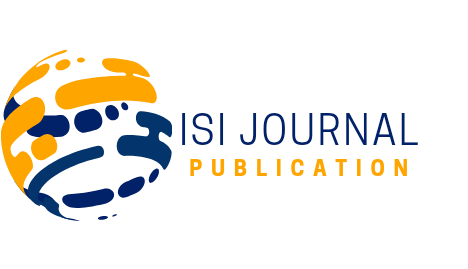Top Reasons Manuscripts Get Rejected (And How to Avoid Them)
Keywords: journal rejection, manuscript mistakes, publishing advice
Every researcher aspires to have their work accepted into a respectable scholarly publication. However, a rejection email stops that trip for many. Although rejection is a typical occurrence in the publishing process, researchers can prevent needless setbacks by being aware of the most common reasons for journal rejection. Avoiding important manuscript mistakes is crucial to improving your chances of acceptance, regardless of your level of experience. We’ll look at the main causes of manuscript rejections in this blog and offer practical publishing advice to help you get past these obstacles.
Simply submitting a manuscript to the incorrect journal is one of the most journal rejection. Every scholarly publication has its expectations, target audience, and scope. One of the most preventable manuscript mistakes is this kind of inconsistency. Spend some time carefully reading the journal’s goals and most current articles before submitting. Is my work in line with the focus of this journal? Your first line of defence against rejection is a submission that is well-targeted.
The majority of journals include comprehensive author guidelines that cover file kinds, formatting, word count, and citation style. A desk rejection without peer review may occur if these standards, even little ones, are disregarded. In addition to showing professionalism, a well-formatted manuscript also facilitates the editor’s work. Even though it may seem simple, this publishing advice is quite important: read the journal’s submission rules carefully and adhere to them.
Rejection is also frequently caused by poor linguistic quality and intelligibility. Your research won’t have the desired effect if it is poorly presented, even if it is ground-breaking. Editors and reviewers are frequently frustrated by manuscripts that contain grammatical errors, odd phrasing, or unclear ideas. Having your manuscript professionally edited or proofread before submission is one of the easiest methods to deal with this, particularly if English is not your native language.
Lack of novelty or relevance is one of the most important manuscript mistakes that can occur in a document. Your research is unlikely to be accepted if it doesn’t provide fresh perspectives, advance current understanding, or address a glaring gap in the literature. Work that advances the field is what journals seek to publish. Make sure your introduction explains the research gap precisely and your conclusion emphasizes the value of your work to avoid falling into this trap. Examining recent works in the journal of your choice and asking yourself, “How does my research compare?” is a smart tactic. What is added that hasn’t been mentioned before?
Weak technique is a problem closely associated with a lack of novelty. If a manuscript’s study design, data collection, or analysis techniques are poor or not sufficiently described, it may be rejected. Journals value scientific rigour and reproducibility, even if your findings are intriguing. Be careful to provide a thorough explanation of your technique, provide justification for your decisions, and candidly discuss any potential drawbacks. Make sure any statistical analysis used is appropriate and presented in an understandable manner. Treating your methodology section as a blueprint is one of the best publishing advice you can give.
An insufficient literature review is another journal rejection. A well-written literature review demonstrates your familiarity with previous research and the logical progression of your investigation. Your credibility may suffer if you submit a paper that misrepresents prior research or omits important references. Spend some time reading the pertinent scholarship in depth, and make sure your citations are current. This not only makes your case stronger, but it also lets editors and reviewers know that your work is based on current scholarly discussions.
An academic article often follows the Introduction, Methods, Results, and Discussion format. Readers and reviewers may become irritated if this framework is not followed or if themes are switched around without obvious transitions. Utilize subheadings to help the reader follow your argument and make sure each part fulfils its intended function. A straightforward yet effective strategy for avoiding manuscript mistakes is to have a clear structure.
Immediate Journal rejection can also result from ethical issues. These include problems like data manipulation, plagiarism, not declaring conflicts of interest, and not obtaining ethical approval for investigations involving humans or animals. When it comes to scholarly publishing, ethical integrity cannot be compromised. Before submitting, always verify your manuscript for plagiarism and make sure it has all the required ethics declarations.
Surprisingly, bad abstracts and titles can often lead to the rejection of even outstanding manuscripts. Editors and reviewers must provide a concise and accurate summary of the work because these are the first things they read. While an ambiguous abstract may misrepresent the goal or conclusions of the study, a vague or excessively complicated title may not be able to capture attention. Your title and abstract are your first opportunity to make a good impression; therefore, carefully crafting them is one of the simplest yet most effective publishing tips.
Lastly, rejection may also result from a failure to respond throughout the peer review process. Journals may revoke their invitation to publish if you don’t reply promptly and constructively, and your paper needs modifications. Consider the feedback you get from reviewers as a chance to make your work better. In your response, clearly state your changes and address each complaint in detail and with respect. This demonstrates your dedication to professionalism and excellence.
To sum up, knowing the main causes of journal rejections can significantly increase your chances of getting published. Every step counts, from choosing the appropriate journal and following rules to refining language, guaranteeing ethical behavior, and welcoming revision criticism. Rejection can be disheartening, but it’s also frequently an opportunity to develop as a researcher. Applying the appropriate publishing tips and learning from typical publishing mistakes will not only improve your chances of acceptance but also result in stronger submissions. Keep in mind that every published paper has a researcher who overcame the challenges; you may do the same with the correct strategy.
